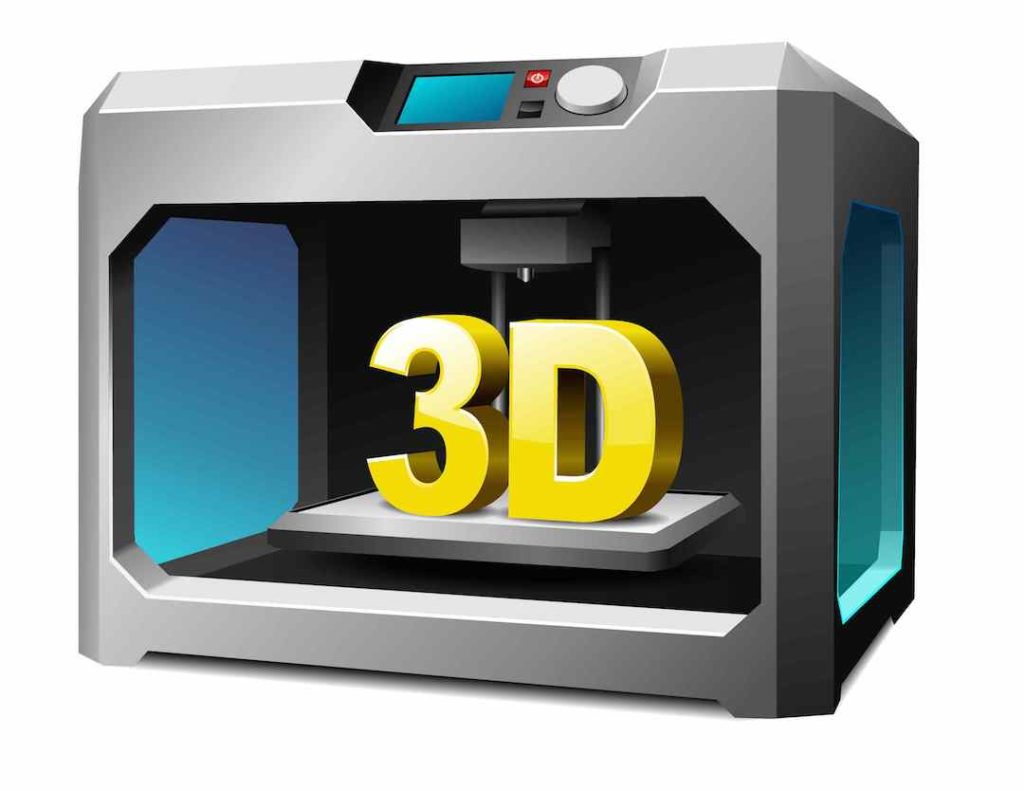HIGH TECH | 3D printing: Eight essential things you need to know
The next industrial revolution will be bannered by Internet-of-Things, robotics and 3D printing.

The next industrial revolution will be bannered by Internet-of-Things, robotics and 3D printing. Yes, that’s 3D printing quite similar to publishing something except that it goes beyond producing reading materials. Given the 3D aspect, the advanced word is that the technology allows printing straight from the design into real products like nuts and bolts, wheelchairs and even medicine. Imagine that!
We’re just as intrigued here at Tech Sabado so we saddled up on our investigative high horse and started finding out what the huge fuss is all about. Now, we give you eight essential things that are shaping the fascinating world of 3D printing.
Definition
There are as many definitions of 3D printing as there are organizations promoting the concept such as the World Bank, MIT and the Organization for Economic Co-operation and Development (OECD). A handy definition is that 3D printing, also known as additive manufacturing (AM), refers to processes in which a computer assembles materials into layers to create a three-dimensional product.
Process
3D printing produces three-dimensional solid objects from CAD or CAM digital files by laying down successive layers of thinly sliced cross-sections to form the final object.
Products
Among the items that can be made with 3D printers are shoe designs, furniture, wax castings for making jewelry, tools, tripods, gifts, novelty items, and toys. The automotive and aviation industries use 3D printers to produce parts.
Physicians and medical technicians turn to 3D printing to make prosthetics, hearing aids, artificial teeth, and bone grafts as well as replicate models of organs and other internal bodily structures from CT scans in preparation for surgery.
The French Culinary Institute has been using an open-source 3D printer to prepare artistic delicacies, and Massachusetts Institute of Technology (MIT) has developed a 3D food printer called the Cornucopia. NASA’s 3D printing research has included food printing, such as 3D-printed pizza.
Advantages
The primary advantage is the obvious disruption to the logistics sector and value chains whereby the components of the product and its assembly are in the 3D printing facility itself. With that, the benefits will redound to just about every industry as diverse as aerospace, automotive, electronics, health and education.
A major development is that the complexity of manufacturing processes can be reduced considerably while at the same time, enabling highly optimized, on-demand and customizable solutions at little additional cost per unit of output.
There is also reduced wastage since the excess material can be recycled and reused and there’s lower emissions as well inasmuch as in-process raw materials need not be transported from one production workshop to the next.
Disadvantages
Since most of the production is automated, 3D technology has the potential to reduce in human labor. The technology could easily put at risk low skill manufacturing jobs in many developing nations. Even highly skilled machinists could lose their jobs.
By its potential to disrupt labor markets, 3D technology could lead to greater social inequality. As labor yields to automation, the net displacement of workers by machines might aggravate the gap between returns to capital and returns to labor and the existing gap between the rich and the poor could widen even more. On the other hand, it is also possible that the displacement of workers by technology will, in aggregate and by a long shot, result in a net increase in safe and rewarding jobs.
3D printing has been cited as a direct threat to manufacturing in poor countries as in the case of home 3D printing which means every home will have its own mini-factory. To illustrate, a first world consumer who requires a certain product might simply print a copy, thus bypassing an entire global supply chain that pays the wages of millions of workers in the developing world.
Latest Philippine developments
The Dept. of Trade and Industry (DTI) has developed a roadmap for the Fourth Industrial Revolution (FIRe) in which 3D printing technology is one of the prime movers along with Artificial Intelligence and the Internet of Things. The DTI recently signed two (2) Memorandum of Understanding (MOU) whereby DTI, DOLE and TESDA will be cooperating on the innovation initiatives agreement under the FIRe MOU, specifically on human resources development for reskilling, and upskilling of the workforce.
The Department of Science and Technology officials has inaugurated the Additive Manufacturing Research Laboratory (AMREL) at the Bataan Peninsula State University. To go on-stream in the next two years, the state-of-the-art 3D printing research facility will be used the development of new materials; testing and characterization of materials; faculty and student sharing and creation of ideas; rapid prototyping, tooling, and manufacturing; training, education, and empowerment; and design and analysis of parts and systems.
There are already local providers of 3D printing equipment who are engaged in the supply as well as provision of related services like 3D scanning, design and printing or creation of prototype.
Engagements in the fight against the Covid-19 pandemic
In his spare time, 16-year-old Marcus Chu from Manila used 3D printing to produce protective shields, which were given to medical personnel at risk of exposure to the highly contagious virus in light of the lack of protective equipment in the city.
Other products from 3D printing that support healthcare professionals in the fight against Covid-19 include hand sanitizer holders, screw-less hands-free handle openers, 3D printed quarantine booths, ventilators, oxygen valves, test swabs, and lung models in surgical planning.
Future trends
Currently exotic, and expensive for non-business use, 3D printers will become commonplace at home within the next
few years —to be found in workshops, home offices, studios, and even in the kitchen.
Medical applications of 3D printing need not stop with prosthetics, hearing aids, and dental crowns. Replacement parts will probably be in the immediate horizon especially for life-saving purposes.
3D printing of non-metals will encourage material substitution while metal-based 3D printing is already showing dramatic promise for metal-forming companies and downstream consumers. In fact, metalworking companies could use 3D printing to leverage other metallic materials such as silver and titanium and gain better performance and longer service life in traditional metal-based products or forge altogether new products from non-traditional metallic raw materials.



